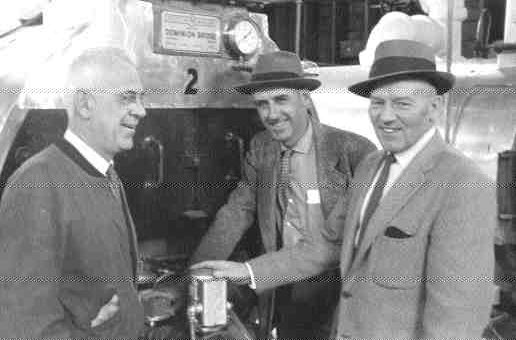Preston East Dome Mines opened 1,237 ft. of new ore lengths in the first five months of this year, against 2,243 ft. in 1950.
Not only is the tonnage of ore in reserve being well-maintained; the average cut grade, from muck samples, of the new material is way up: 0.24 oz. gold per ton, versus 0.18 oz. in previous years.
The new ore west of the shaft on the 23rd level has now stretched out to 520 ft. and remains strong in the west face. Total vein length so far is 607 ft.
The operation is holding its own this year in credible fashion. The average daily milling rate is 680 tons, with $913,752 of gold having been produced. The average recovery per ton is $8.89, and costs averaged $7.77 per ton.
If the mineral potential of Newfoundland does not get a thorough going-over, it will not be for lack of trying, as far as Falconbridge Nickel Mines is concerned.
The nickel giant has stepped into the province in a big way, and, though it is too early to draw any positive conclusions, preliminary indications suggest that the company has a mighty interesting bet on its hands — one that could pay off with handsome returns.
In the Notre Dame Bay area, along Newfoundland’s northern coast, Falconbridge has lined up three old properties: Gull Pond, Tilt Cove and Rambler. In addition to the private holdings, the major has acquired a concession on the surrounding area, covering 2,500 sq. miles. The company is required to spend at least $150,000 over three years.
Production levels at Falconbridge Nickel are at an all-time high, and the numbers represent a substantial increase over the comparable period last year.
Although official results have yet to be made public, a jump of 10% is not out of the question. The gain has been brought about by the bringing the McKim mine into production. The mine is now producing 500 tons per day.
Meanwhile, shaft-sinking at the Levack mine is well under way. Work has reached a depth of more than 200 ft. The shaft is slated to go to 1,000 ft., which is the known depth of the orebody.
Broulan Reef Mines came into being this month following the merger of Broulan Gold Mines and Porcupine Reef Gold Mines.
The union brings together the robust Porcupine Reef gold property, Broulan’s 700-ton-per-day processing mill, two smaller mines, and the Banner Porcupine gold prospect.
The integrated operation represents $1.25 million in assets.
Porcupine Reef, a relatively young producer, has been blossoming out with some splendid ore disclosures. These were reflected in a 1950 profit of $812,008, compared with $130,550 in 1949.


Be the first to comment on "Preston East Dome finds new ore"